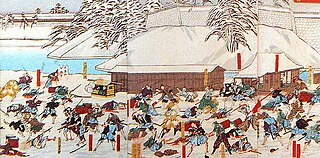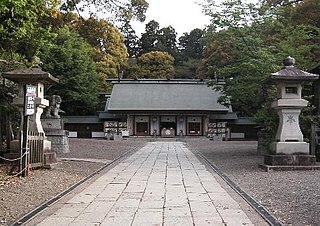 W
WMito was a Japanese domain of the Edo period. It was associated with Hitachi Province in modern-day Ibaraki Prefecture.
 W
WThe Kōdōkan (弘道館) was the largest han school in the Edo period. Located in Mito, Ibaraki Prefecture, Japan, three of its buildings have been designated Important Cultural Properties and the school is a Special Historic Site.
 W
WThe Mito rebellion , also called the Kantō Insurrection or the Tengutō Rebellion , was a civil war that occurred in the area of Mito Domain in Japan between May 1864 and January 1865. It involved an uprising and terrorist actions against the central power of the Shogunate in favour of the sonnō jōi policy.
 W
WPrincess Yoshiko was the younger sister of His Imperial Highness Prince Tsunahito of Arisugawa-no-miya. Yoshiko married to Tokugawa Nariaki, the 9th feudal lord of Mito Domain. She was the mother to the 10th lord Yoshiatsu as well as the 15th and the last Chief of the Tokugawa shogunate, Tokugawa Yoshinobu.
 W
WThe Sakuradamon Incident was the assassination of Japanese Chief Minister (Tairō) Ii Naosuke (1815–1860) on 24 March 1860 by rōnin samurai of the Mito Domain and Satsuma Domain, outside the Sakurada Gate of Edo Castle.
 W
WTakeda Kōunsai was a Japanese samurai from Mito Domain and councillor to Mito daimyō Tokugawa Nariaki in Bakumatsu period Japan. He became the leader of the Mito Rebellion and was executed by the Tokugawa shogunate with a large number of his followers shortly before the Meiji Restoration.
 W
WTokiwa Jinja (常磐神社) is a Shinto shrine adjacent to the gardens of Kairakuen in Mito, Ibaraki, Japan. Founded in 1874, enshrined are Tokugawa Mitsukuni, second daimyō of the Mito Domain and compiler of Dai Nihonshi, and Tokugawa Nariaki, ninth lord and founder of the nearby Kōdōkan han school. In 1882 the shrine joined the ranks of the bekkaku kanpeisha (別格官幣社) or Imperial Shrines. The Tokiwa Jinja Reisai or annual festival is held on 12 May. A cannon and a drum have been designated as Cultural Properties by the city.